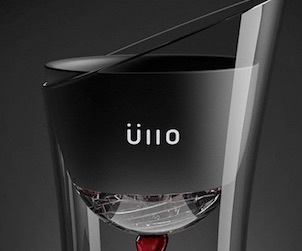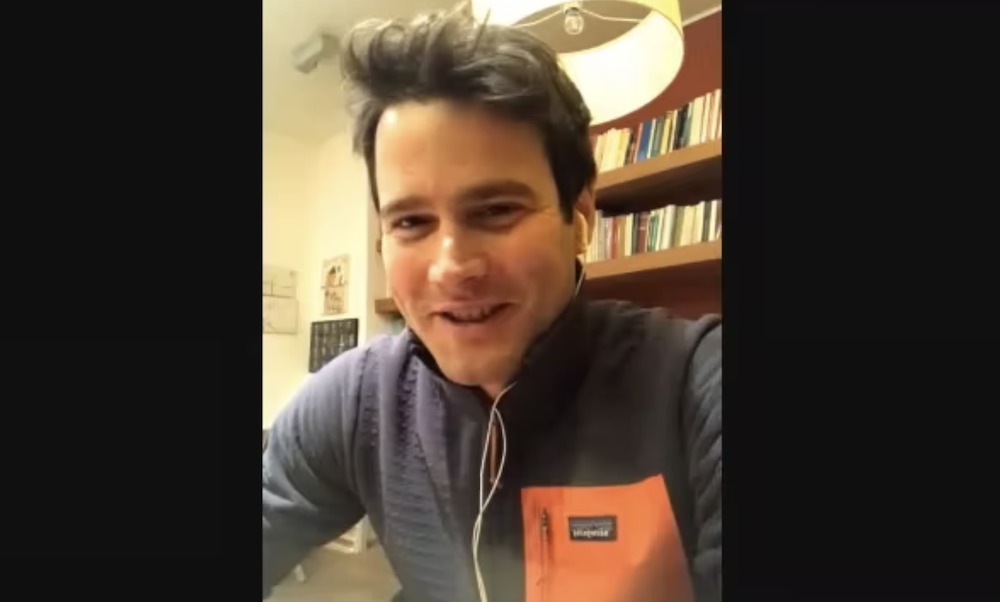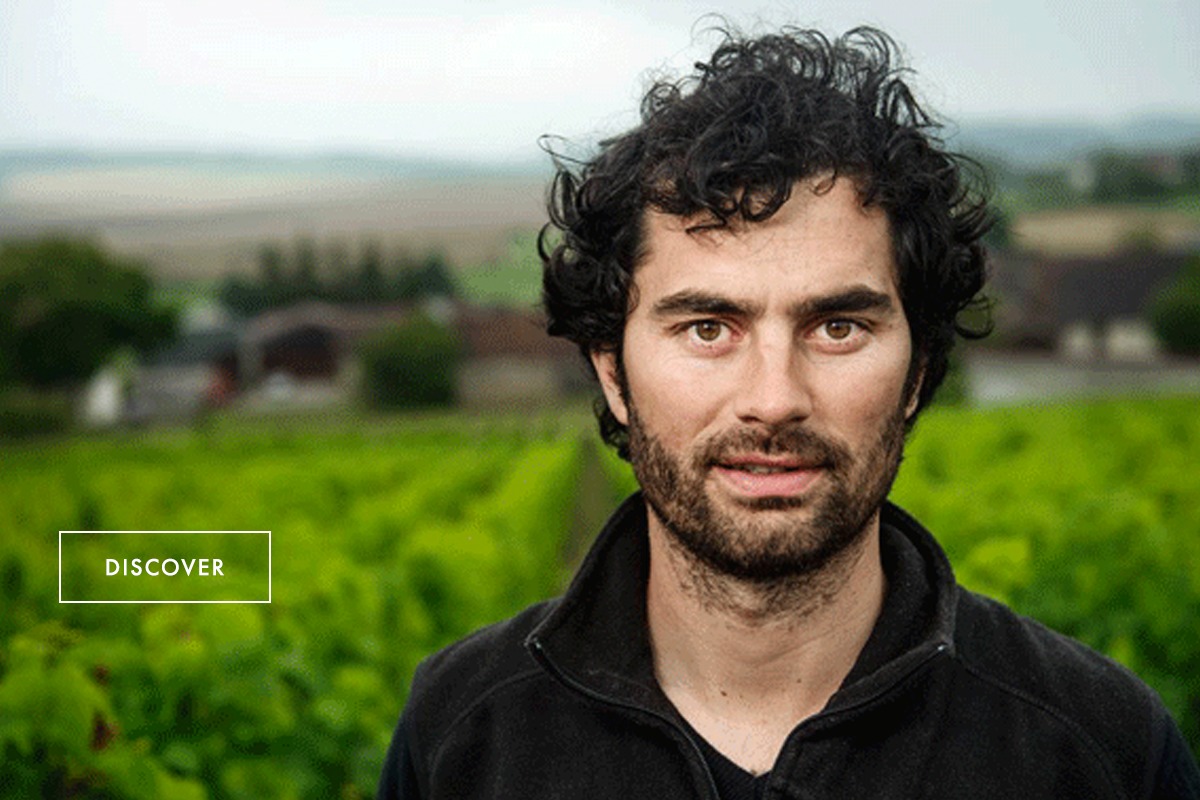Malcolm Jolley talks to Üllo founder Chemistry PhD James Kornacki about his wine filter.
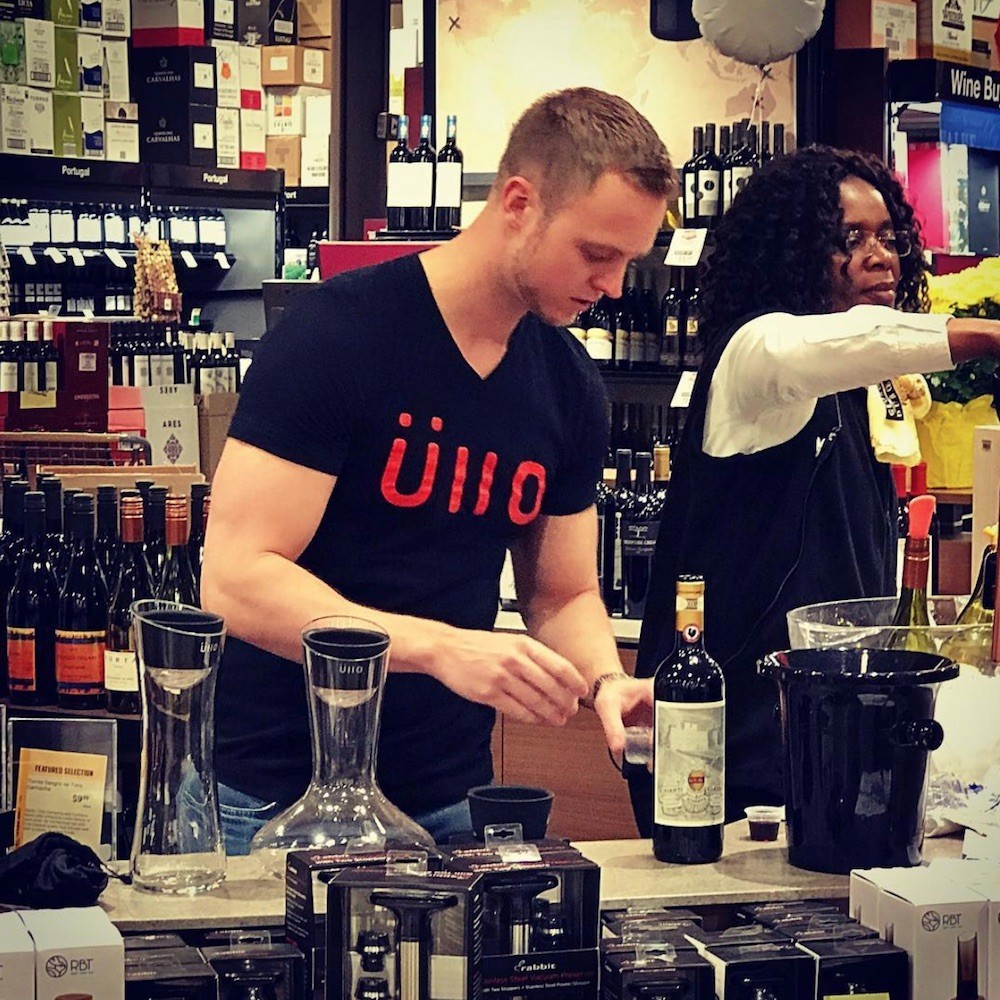
Üllo founder James Kornacki demonstrates his sulphites filter for wine. Photo: Instagram.
In the wine world, there is no shortage of debate about the use of sulphur dioxide in winemaking and the effects of sulphites in wine. James Kornacki, a PhD graduate from Northwestern University’s Chemistry Department, may have rendered all of them moot. Kornacki has invented, and brought to market, Üllo, a plastic wine filter that sits on top of a glass, or a decanter, and removes the sulphites from wine.
I tried the Üllo filter this week, with two glasses of Niagara Gamay set side by side. Whatever the science, it’s a beautifully designed product, both aethestically and as a business model. The actual filter is a round pouch that looks a like a teabag. It’s fitted into a plastic case, that is fitted over a glass or a decanter. Wine pours in, then slowly drips out, presumably sulphite free. One bag will filter one bottle of wine, so if we went sulphur free at my house, we’d need a steady order of filter bags.
I set up my tasting so that one glass of Gamay was filtered with the Üllo, and one left in it’s ‘natural’ state. It wasn’t much of an experiment, since I have no idea how many sulphites were in the bottle of wine, I’m not sure what sulphites even taste like, and I don’t have an intolerance to them. Still, I was interested and wondered what would happen. To make things even more interesting, I called James Kornacki up on Skype and spoke to him for the interview below as I tried it out.
This interview has been edited for length, clarity and style.
Good Food Revolution: Is the point of the Üllo to change the taste of wine?
James Kornacki: No that’s not the point. When I first started looking into the effects of sulphites in wine my intention was not to perceptively change the wine in any way. I thought that doing so would be blasphemous because a lot of care and effort goes into making wine and I don’t want to change that. Although I did end up drinking a sulphite solution, believe it or not, to see what those chemicals taste like. I had a chemistry professor who once said that you never really know a chemical until you’ve tasted it. That’s bad advice! But I thought I would use it in this case to ind out if you could taste sulphites. It turns out they taste terrible. It’s not the kind of sulphurous taste you would expect, but a sort of chemical bitter taste. So, as soon as I discovered that, I thought, if I am successful, the taste won’t be that changed and, since sulphates taste terrible, it’s ok if the taste changes a little bit. But it’s never been my goal to change the taste of the wine.
Good Food Revolution: When I taste between two glasses, the one filtered by Üllo seems just a little bit brighter and fruitier, but I am highly suggestible and might be looking for a difference too hard.
James Kornacki: Most people say they can tell a small difference, especially with white wines because they are less tannic. And, while you never know what the level of sulphites is a wine, in white wines it tends to be the highest.
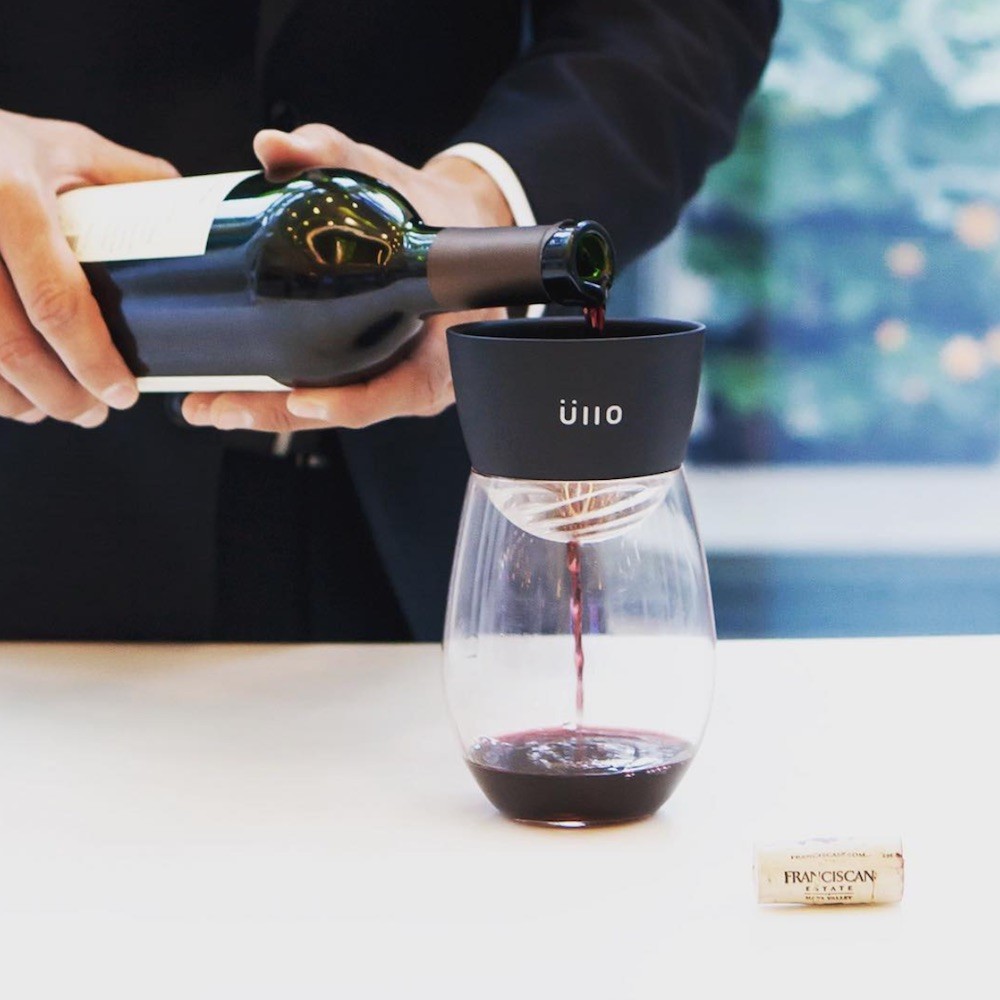 Good Food Revolution: Well, I am comparing between to glasses of Gamay, so it’s a lighter red and I think maybe there’s something going on…
Good Food Revolution: Well, I am comparing between to glasses of Gamay, so it’s a lighter red and I think maybe there’s something going on…
James Kornacki: If you find a kind of smoothing out in the finish, that’s what I associate with the sulphites removal. So, the wines that are high in sulphites tend to become smoother and more palatable, the process takes an edge off of the finish. And that’s universal across varietals, it’s that effect that’s always there.
Good Food Revolution: A big part of my job is talking to winemakers, and there is a fair amount of agonizing from them about sulphur and sulphites in wine. They can be stuck between wanting to stabilizing their wines, wanting to ship out wines that are not going to arrive at a place in a different state than when they left their cellars, and also wanting to make “natural” or “non-interventionist” wines that truly express their terroir.
James Kornacki: Yeah, it’s difficult. Sulphites are known to be toxic, and they are regulated, but they’re also essential to winemaking. As a chemist, that’s something I very much appreciated. They work by killing the organisms that facilitate oxidization. We’ve always recognized and appreciated that it’s very hard to make wine without it. So, we never ever demonize sulphites, we just note that their job as a preservative is over when you open the bottle. We’re giving you the option to take them out. I often tell that to winemakers, when we get a chance to talk to them, and they like to hear it. We’re giving them a chance to expand their market to people who are sulphite sensitive.
Good Food Revolution: So, you’re saying to winemakers that they can debate either side of the sulphur argument as much as they want, you’re just providing another option?
James Kornacki: That’s all the product does: it takes sulphites out of wine. Period. We’ve never said they’re evil, or that they cause headaches. We just stick to the chemistry. I always thought that would be enough.
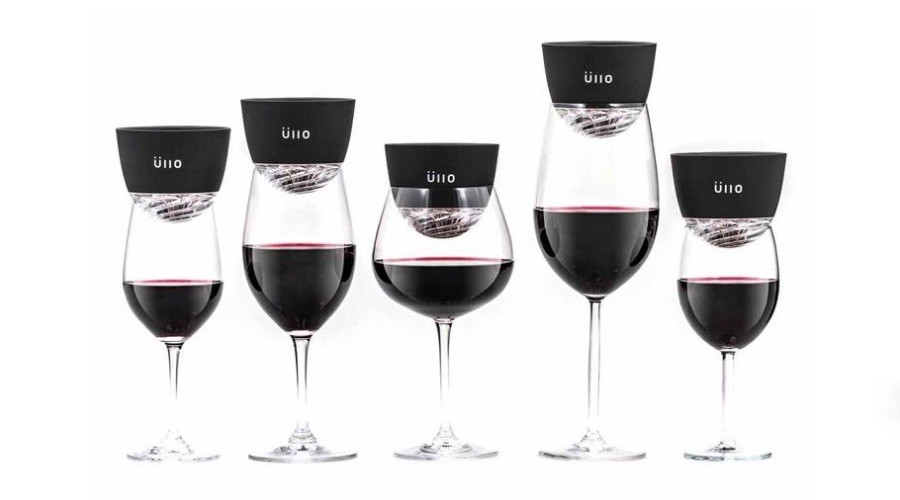 Good Food Revolution: Can you explain how you do this? How does it work?
Good Food Revolution: Can you explain how you do this? How does it work?
James Kornacki: Sure. What was the last science class you took?
Good Food Revolution: Err… not sure. I will say I have a son who’s currently taking Grade 9 Chemistry and I had a look at his text book the other night. Does that count?
James Kornacki: [Laughs.] Sure. I always ask that to see what kind of depth to go into. The filter is comprised of a polymer that I developed. It’s a pharmaceutical and food grade macro-porous resin, that means it’s made of little plastic beads with extremely high surface area. The sulphites bind to a unique chemistry on the surface. It’s modified surface chemistry selectively sequesters sulphites. What I think is most remarkable about the filter is that where the sulphites bind to the surface, the surface area is over 3,000 square feet in that one inch filter. That’s really the magic of it.
Good Food Revolution: Are the beads really wrinkled? Or do they have spikes coming out of them?
James Kornacki: If you looked at them under an electron microscope you would see a perfect sphere with pores in it that extend around the entire structure. Those pours are on almost a nano scale. If you fold something in and out of itself so much, at that scale you get unbelievable surface areas that defy logic.
Good Food Revolution: That’s really cool. And your inspiration was your aunt who couldn’t drink wine because of the sulphites, right?
James Kornacki: Yup, and halfway through grad school I knew an awful lot about organic chemistry and wanted to apply it in a new way. The sulphite problem had always stuck with me and I figured out that it’s really a problem of chemistry. I knew that if I could solve it I could help my aunt, and people would want it.
Good Food Revolution: Now, you’ve been at this for several years, right? This isn’t an overnight sensation.
James Kornacki: I started investigating the selective sulphite capture concept in late 2012, early 2013. I set up a lab in my apartment, which looked very suspicious, if you didn’t know what I was doing.
Good Food Revolution: Breaking Bad was out then, probably!
James Kornacki: That is when it was out and it’s funny because I was mid-way through grad school and you can imagine how much all of the chemistry kids loved it! We loved it because they had clearly consulted a really good chemist. Everything in that show was spot on. We later learned that it was a DEA PhD chemist because she came and did a talk at Northwestern and everyone loved it because we were so into that show.
Good Food Revolution: Your PR people told me you’ve just flown back from the UK, where you were showing Üllo off at Harrod’s. It sounds like it’s being well received and gaining a following around the world?
James Kornacki: I think so. Like I said, I just tell people what the product does, and then it’s up to the consumer to respond. We’ve only said that, and it’s been obvious what the response is. Ever since our Kickstarter, people notice a difference in wine, an improvement and people seem to feel a lot better. People with sulphite sensitivities are reporting they can drink wine. Some people who said they got badly hungover (myself included) are reporting that with Üllo they are not. I have to be careful about health claims. I’m not trying to make them, but when I see the reviews online I am encouraged because that is completely unsolicited feedback about why people like it. And that’s been the scariest part for me, to wait and see how it would be received. Now it’s the most gratifying; the conclusion of a very long experiment.
Find out more about Üllo and James Kornacki at ullowine.com

